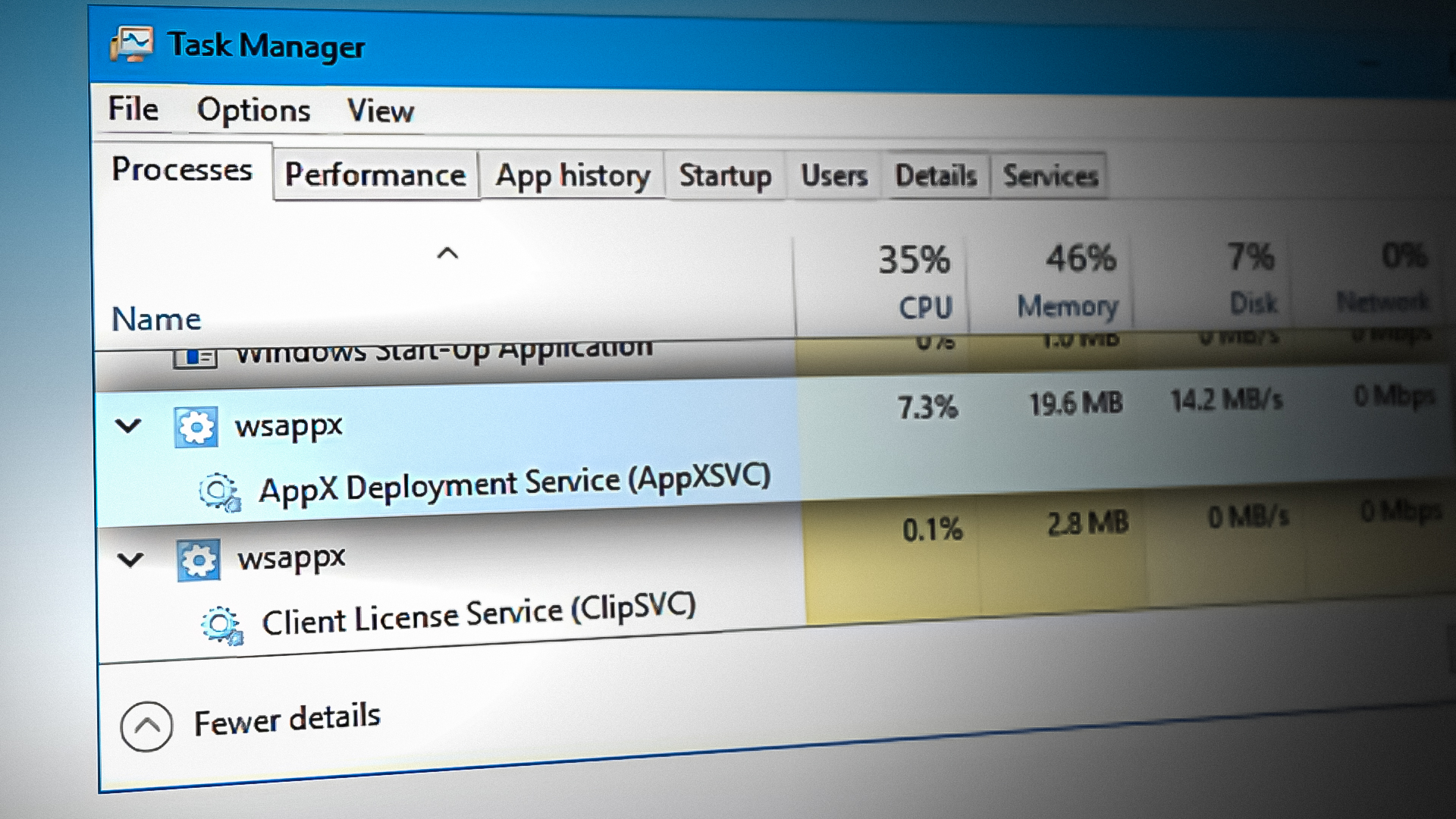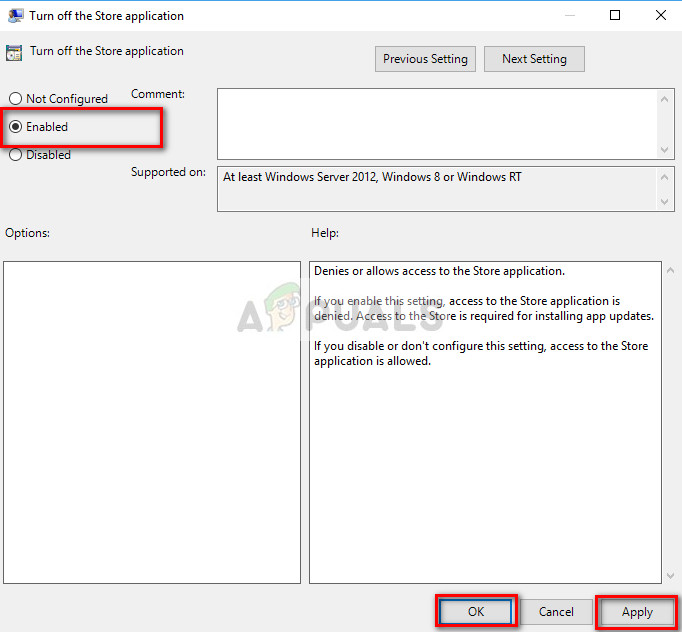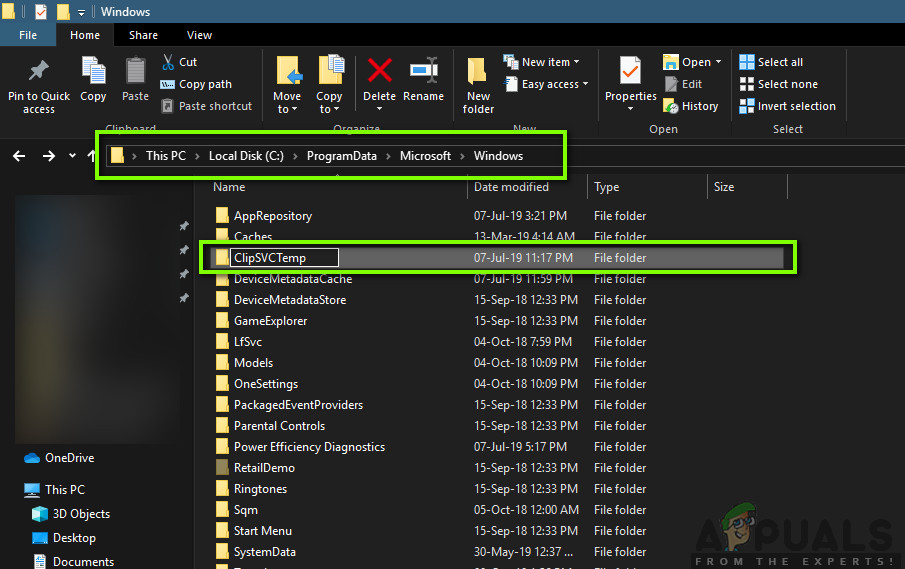Fix: High CPU and Memory Usage by wsappx
Wsappx is a process that you will see running in the Task Manager’s process list. You might be wondering what this process is or you might be wondering why this process is causing a lot of CPU usage. You will notice that wsappx’s CPU usage increases and decreases randomly. Sometimes, it won’t be using any significant amount of CPU while sometimes you might see a high CPU usage by this process. If you double click this process, you will see two more processes under the wsappx. These sub-processes will be named AppXSVC, ClipSVC (or WSService in Windows 8). You might also notice that there are multiple instances of wsappx in the Task Manager’s process list.

What is Wsappx?
Wsappx is a process that was introduced in Windows 8 and can be found in the later versions like Windows 10. This process runs in the background and it is related to the Windows Store and Windows Universal Apps. The services running under this process are also related to Windows Store and/or Windows Universal App platform. These services are used to either update a Windows app or for license checking purposes.
Should I be worried about Wsappx?
No, not at all. As mentioned above, it is a Windows own process that can be found in Windows 8 and Windows 10. As of right now, there aren’t any viruses or malware associated with this name. So, if you see this process running while looking at the process list in Task Manager, do not worry about it. It is a legitimate Microsoft’s process and it is found on every Windows 8 and 10 running computer.
What causes the high CPU usage of wsappx?
There are a lot of users who have complained about wsappx’s high CPU usage. As mentioned in the first paragraph, its CPU usage might increase or decrease on its own. But you will, at some point, see a high CPU usage by this process. Since this process is related to the Windows Store and/or Windows Universal App platform, the high CPU usage you’ll see will be the result of this process either installing or updating one of the Windows app. Whenever you’ll see a high CPU usage, one of your apps must be getting updated. And, you won’t always see it at high CPU usage because this process initiates on its own whenever an app needs updating or installation.
You’ll notice that you won’t be able to disable this process from the Windows Services. If you try to do so, you might see a message telling you about it affecting other apps. Similarly, you might see the same message (or a variation of it) if you try to End Task the process from the Task Manager. However, there are some ways of disabling this process. If you are one of those users who don’t use Windows Apps a lot or you simply want to get rid of the process because of its high CPU usage, there are a couple of things that you can try. These methods are given below. Start from method 1 and keep trying the methods until you solve the high CPU usage issue.
Method 1: Disable Windows Store
Note: This method won’t stop wsappx from running in the background. You will still be able to see the wsappx process in the Task Manager. However, wsappx won’t cause high CPU usage once the Windows Store is disabled.
Since the process is related to the Windows Store and wsappx uses the resources to update or perform other tasks related to the Windows Store Apps, disabling the Windows Store will stop wsappx from using so many resources.
The problem here is that you can’t just simply disable the Windows Store from services, like you would normally do with other services. So, we will have to use the Local Group Policy Editor.
Here are the steps for disabling Windows Store via Local Group Policy Editor
Windows 10
- Hold Windows key and press R
- Type gpedit.msc and press Enter

- Navigate to this location Computer Configuration > Administrative Templates > Windows Components > Store. If you don’t know how to navigate to this location then follow the steps given below
- Locate and double click Computer Configurations from the left pane
- Locate and double click Administrative Templates from the left pane
- Locate and double click Windows Components from the left pane

- Locate and click Store from the left pane
- Double click the option Turn off the Store application

- Select the option Enabled.
- Click Apply then select Ok

Reboot your pc and you should be good to go.
Windows 8 and 8.1
The Local Group Policy Editor isn’t available in Enterprise and Professional Editions. So, if you are using an Enterprise or Professional Edition then you will have to do this from the registry. Here are the steps for Disabling Windows Store via Registry.
- Hold Windows key and press R
- Type Regedit and press Enter

- Navigate to this location HKEY_LOCAL_MACHINE\SOFTWARE\Policies\Microsoft\WindowsStore. If you don’t know how to navigate to this location the perform the following steps
- Locate and double click HKEY_LOCAL_MACHINE from the left pane
- Locate and double click SOFTWARE from the left pane
- Locate and double click Policies from the left pane
- Locate and double click Microsoft from the left pane

- Locate and click WindowsStore from the left pane. If there is no WindowsStore then you will have to create a new folder named WindowsStore on your own. Follow the steps given below to create the WindowsStore yourself
- Right-click Microsoft folder from the left pane, select New then select Key
- Type the name WindowsStore and press Enter

- Now, select WindowsStore from the left pane
- Right-click on an empty space in the right pane and select New. Select DWORD (32-bit) Value

- Name the newly created entry RemoveWindowsStore and press Enter

- Now, double click the newly created RemoveWindowsStore
- Type 1 in the value and press Enter

That’s it. This should disable the Windows Store in Windows 8 and 8.1.
Method 2: Use Registry Editor
You can use the registry editor to change some strings which will solve this issue.
- Hold Windows key and press R
- Type regedit and press Enter

- Navigate to this location HKEY_LOCAL_MACHINE\SOFTWARE\Microsoft\Windows NT\CurrentVersion\SvcHost. If you don’t know how to navigate to this location the perform the following steps
- Locate and double click HKEY_LOCAL_MACHINE from the left pane
- Locate and double click SOFTWARE from the left pane
- Locate and double click Microsoft from the left pane
- Locate and double click Windows NT from the left pane
- Locate and double click CurrentVersion from the left pane


- Locate and click SvcHost from the left pane.
- Locate and double click the string named wsappx from the right pane

- A new window will open and you will see 2 entries in the value section. These 2 entries will be clipsvc and AppXSvc. Change these entries to NotFound and AppXSvc.


- Click Ok
- Reboot
That’s it. This should solve the high CPU usage issue for you.
Method 3: Disable Superfetch and Windows Search
If the above 2 methods didn’t work then try disabling the Superfetch and Windows Search services. Disabling these services have known to work for a minority of the users. So, it is worth a try.
- Hold Windows key and press R
- Type services.msc and press Enter

- Locate and double click Superfetch from the list

- Select Disabled from the drop-down list in Startup Type section

- Click Apply and select Ok

- Close the Superfetch Properties window
- Locate and double click Windows Search

- Select Disabled from the drop-down list in Startup Type section

- Click Stop if the Service Status is Running
- Click Apply and select Ok

That’s it. Once done check if the problem is resolved or not.
Method 4: Reinitializing Store License Database
If all the above methods don’t work out, we can try reinitializing the Windows Store License Database. Do note that using this method, you might get some of Windows Store applications uninstalled but once the issue is resolved, you can easily reinstall them within minutes. Here, we will first start in Safe mode so Windows Store service gets paused and then will rename a specific directory. Then we will start back in normal mode and hopefully, the issue will be resolved.
- First, you have to boot your computer in Safe Mode. After you are in safe mode, follow the steps below.
- Press Windows + R and type the following address in the field and press Enter.
C:\ProgramData\Microsoft\Windows
- Here, look for the following folder:
ClipSVC

Now, rename the folder to something like ‘ClipSVCTemp’. Save changes and exit.
- Boot your computer back in normal mode. Initially, Windows might take a while when initializing all the configurations to the default state. After that, hopefully, the issue will be solved and there will no longer be any CPU/Memory usage by ‘wsappx’.